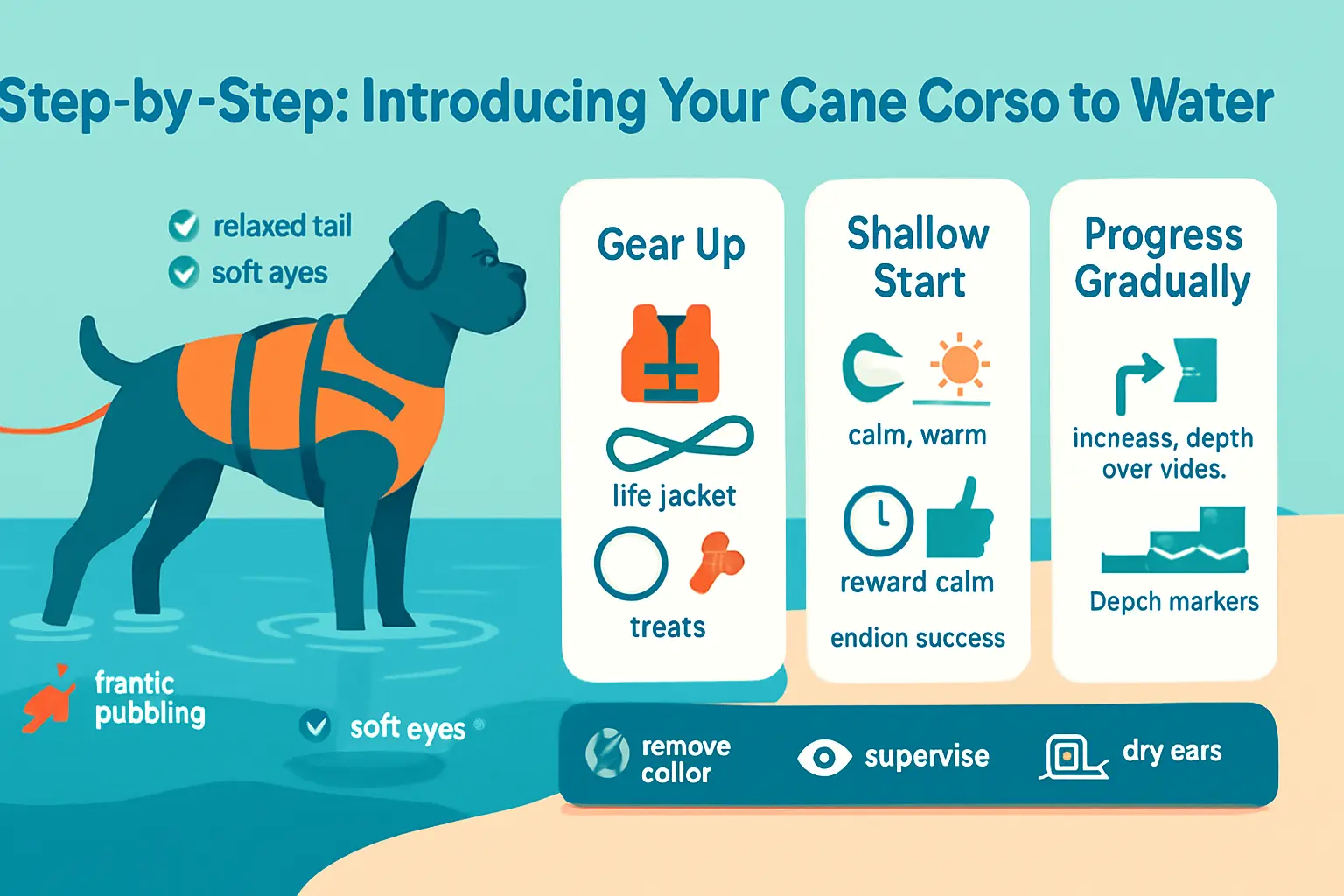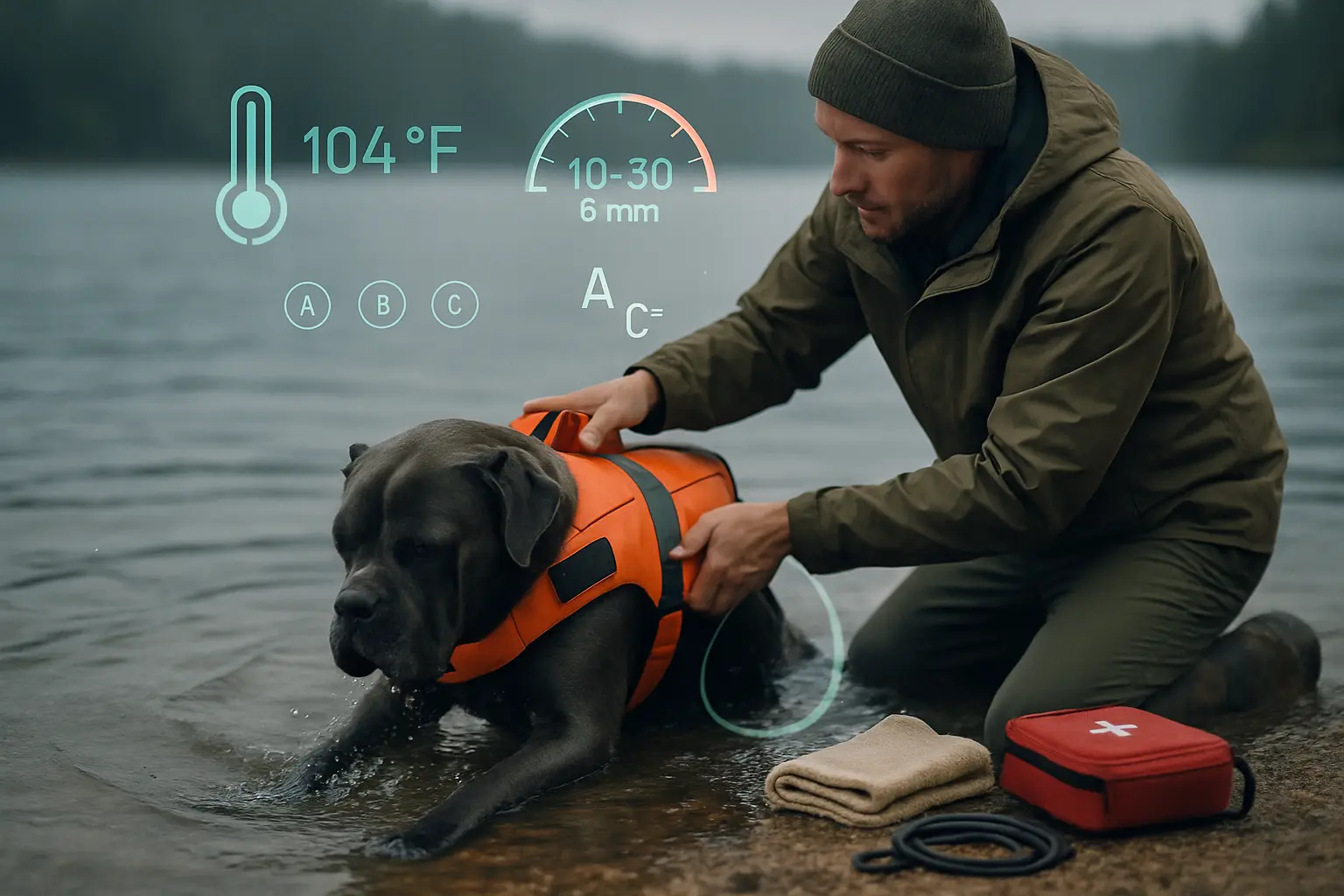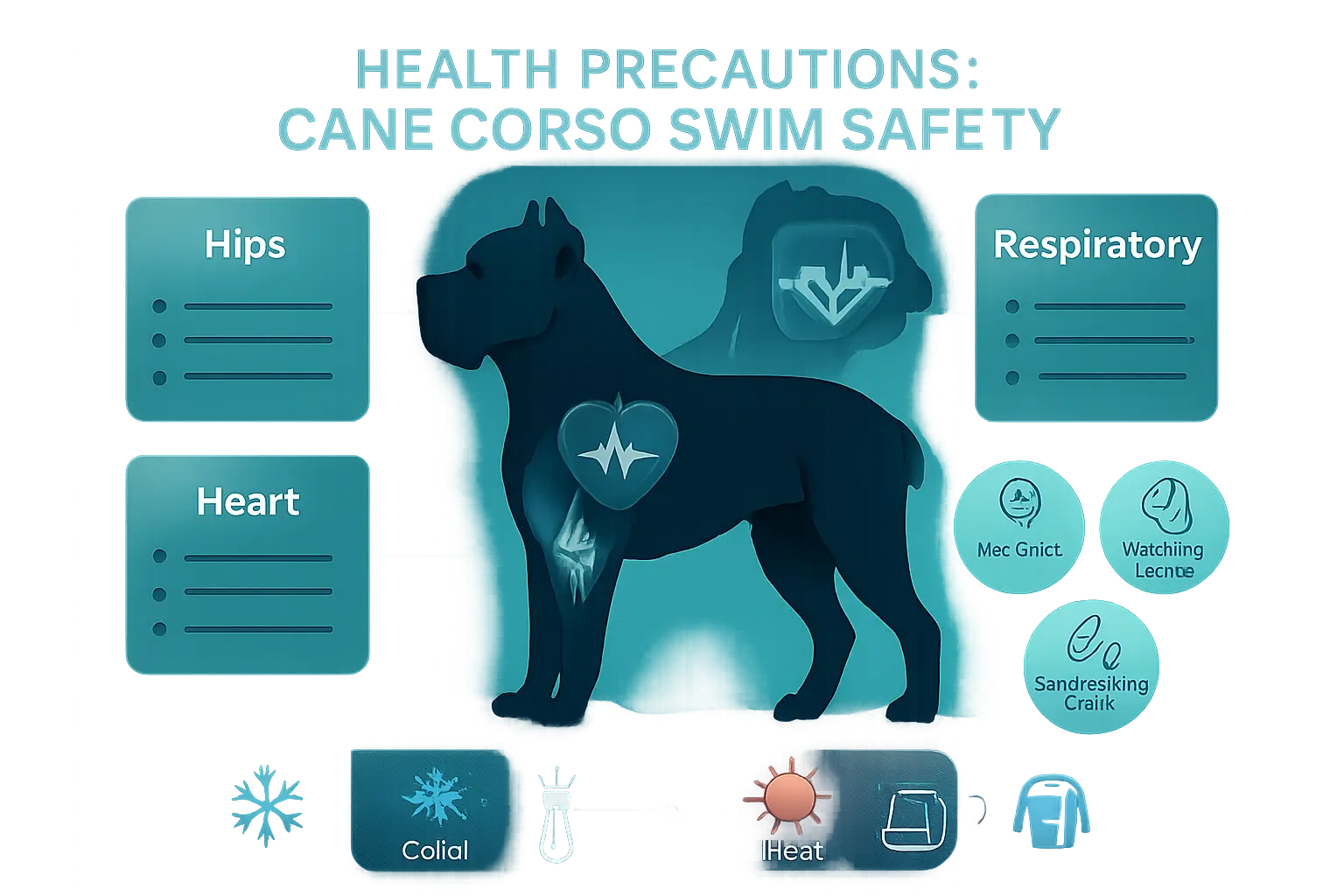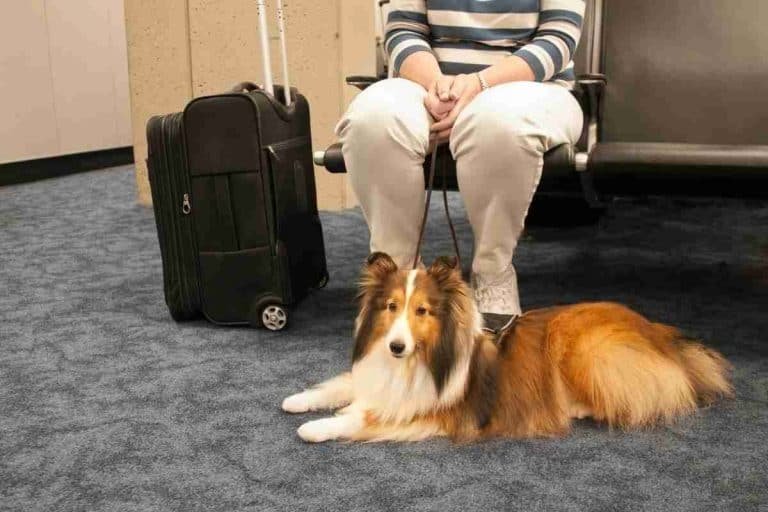Can (and Should) Cane Corsos Swim? Safety, Training & Health Considerations
Last Updated on August 29, 2025
Can Cane Corsos swim? Many can, but ability varies widely. Should they swim? Yes, with strict safety, training, and health checks. Their dense muscle, deep chests, and short muzzles reduce buoyancy. A properly fitted life jacket helps keep the head high. Start in calm, shallow water and watch for fatigue. Veterinary clearance is essential for puppies, seniors, and dogs with cardiac, respiratory, or orthopedic issues.
Owners will find step-by-step training, gear checklists, and safe site choices. The guide compares pools, lakes, rivers, and ocean risks. It explains positive reinforcement, life jacket fit, and exit skills. It also outlines distress signs, rescue steps, and aftercare. Seasonal hazards, ear care, and blue-green algae get attention. With this plan, owners can build confidence while avoiding currents, hypothermia, and heat exhaustion.
Can Cane Corsos Swim?
Cane Corsos can swim, but ability varies widely by individual. Many will paddle effectively when introduced carefully. Others struggle because of heavy bone, deep chest, or lack of exposure. Owners should treat swimming as a learned skill rather than an automatic talent.
Safety matters more than pride. Use a properly fitted life jacket for first swims and whenever open water or currents exist. Remove collars before entering water to prevent snag hazards. Start in calm, shallow water and watch for fatigue; large dogs tire quickly while treading water.
Health status determines readiness. Puppies, seniors, and dogs with cardiac, respiratory, or orthopedic issues should avoid swimming until cleared by a veterinarian. A short swim test under supervision helps assess stamina and comfort.
Breed comparisons can help set expectations. For example, readers may also find practical points in discussions about other breeds’ swimming tendencies like Can Dobermans Swim?
How body type and build affect buoyancy
Buoyancy depends on body composition and shape. A Cane Corso’s dense muscle and heavy bone reduce natural floatation. Deep chests shift the center of mass low and forward, making the rear end sink. Short legs offer less surface area for propulsion. Combined, these traits force the dog to work harder to stay afloat.
Fat distribution improves buoyancy. Overweight dogs may float more easily but face extra strain on joints and the heart. Conversely, very lean dogs sit lower in the water and exhaust faster.
Owners should choose a life jacket that lifts the hindquarters and keeps the muzzle high. Look for suits with a handle on the back for quick rescues and adjustable straps for a snug fit. Practice walking in shallow water while the jacket is on, so the dog adapts to the changed center of gravity.
Do Cane Corsos have webbed feet or natural water instincts?
Cane Corsos do not typically have pronounced webbed feet. Their paw structure suits land work more than aquatic propulsion. Some Corsos display moderate interdigital webbing, but not at the level of water spaniels or retrievers.
Natural water instinct varies. Working-line Corsos with confidence and exposure may enjoy swims. Those without early, positive experience often hesitate or panic. Breed history focused on guarding and draft work, not water retrieval, so instincts alone do not guarantee competence.
Introduce water using shallow, controlled environments. A shallow kiddie pool or gradual shoreline entry helps the dog build confidence. Consider using a soft ramp or steps for exits. Portable pool options can make controlled practice easier; owners can compare models in lists like 10 refreshing puncture-proof dog pools.
Why individual temperament and experience matter
Temperament dictates response to water. Confident, curious dogs adapt faster. Anxious or high-strung dogs resist and may panic. Past trauma around water intensifies fear. Positive, patient conditioning changes behavior more reliably than force.
Training should follow gradual exposure and positive reinforcement. Reward calm behaviors near water and break sessions into short, successful tries. Use flotation aids and human presence close by. Never toss a hesitant dog into deep water; that risks creating lifelong aversion.
Experience matters practically. Regular, supervised swims build muscle, stamina, and routine. Occasional exposure without structure increases risk. For anxious dogs, combine behavioral strategies with resources like 9 natural ways to remedy your dog’s travel anxiety and consult a professional trainer or veterinarian when needed.
Weighing the Benefits and Risks of Swimming for This Breed
Swimming can be a valuable activity for Cane Corsos when supervised and introduced correctly. Owners should weigh the physical conditioning and mental enrichment against breed-specific risks. This section breaks down the clear advantages, common hazards, and how age, weight, and seasons change the safety profile.
Physical and mental advantages of supervised swimming
Supervised swimming delivers low-impact cardiovascular exercise that reduces joint stress compared with running. It builds core and limb muscles evenly, helping large, heavy breeds like the Cane Corso carry their mass more comfortably. Swimming also aids controlled weight loss for overweight dogs, lowering the risk of orthopaedic issues. Mentally, water sessions provide novel stimulation that reduces boredom and destructive behaviours. Regular, short swims improve endurance without repetitive joint loading. Always use short intervals, consistent positive reinforcement, and a properly fitted life jacket for initial sessions to keep the experience positive.
Situations where swimming may be unsafe or ill-advised
Cane Corsos with heart disease, respiratory conditions, recent surgeries, or certain skin infections should avoid swimming until cleared by a veterinarian. Open water hazards include strong currents, sudden drop-offs, contaminated water with blue-green algae, boat traffic, and limited exit points. Cold water can trigger hypothermia, while hot days can mask exhaustion—dogs may overexert and silently tire. Owners should monitor breathing, pace, and coordination and stop any swim at the first sign of distress. For equipment and ear protection considerations, see resources on dog ear plugs for swimming.
Age, weight and seasonal factors that change the risk profile
Puppies under four months and elderly Cane Corsos lack the strength or stamina for long swims. Overweight dogs drain energy faster and struggle to stay buoyant; gradual conditioning is essential. Pregnancy and lactation increase risk and call for veterinary guidance. Seasonal factors matter: cold seasons raise hypothermia risk, while warm seasons can harbor pathogens and toxic algal blooms. Summer also increases the likelihood of rapid fatigue—provide frequent rest, shaded cool-downs, and fresh drinking water. Before introducing open-water swims, arrange a vet check and consider professional swim training focused on entry/exit skills, breath control, and safe pacing.
Step-by-Step: Introducing Your Cane Corso to Water

Start with a controlled, short session in shallow water. Choose a calm, warm day and a quiet spot with a gentle slope. Have a properly fitted canine life jacket ready; even strong swimmers benefit from added buoyancy. Begin on dry land by rewarding calm behavior near the water’s edge, then step slowly into ankle-deep water while offering treats and low-key praise. Keep the first sessions under five minutes to avoid fatigue and stress. Use a long line rather than forcing the dog; allow the Cane Corso to approach at its own pace. Watch body language closely—relaxed tail and soft eyes indicate comfort; rapid paddling or frantic attempts to climb out signal panic. After each positive step, reward and end the session on a high note. Gradually increase depth and time over multiple visits, always checking for signs of exhaustion. For safe at-home options and small practice pools, consider portable pools designed for dogs, such as the 10 refreshing puncture-proof dog pools, to control conditions and ease the transition.
Puppy introductions vs adult dogs — a gradual plan
Puppies require a gentler, health-conscious approach. Wait until the veterinarian clears vaccinations before exposing a puppy to communal water bodies. Start with very shallow play and closely monitor joints; Cane Corso puppies have growing bones that can tolerate only short, gentle sessions. Use positive associations—treats, toys and calm praise—while keeping sessions frequent but brief. Adults may need a different tempo. An adult with no water experience often benefits from more deliberate desensitization: stationary footing in shallow water, then assisted paddling with a hand under the chest while a life jacket provides support. For fearful adults, break progress into smaller steps and extend the number of short sessions rather than session length. Avoid forcing either puppy or adult into the water; forced entry raises trauma and resistance. For breed-specific swimming context and precautions, see considerations discussed for similar large breeds like the Can Dobermans.
Positive reinforcement techniques and verbal cues
Positive reinforcement builds reliable, calm swimming behavior. Start on dry ground: teach and reward core cues such as sit, stay and come with high-value treats. Introduce a water-specific cue like “in” or “easy” paired with treats and a toy. Use an immediate reward system or a clicker to mark desired behavior precisely. Keep the training timeline short—three to five minute bursts—so the Cane Corso remains motivated. Reward both attempts and small successes; praise upon entry, mid-swim support and a treat at exit reinforce the full sequence. Practice exit cues so the dog learns the safest way out of water. Avoid scolding; negative feedback slows progress and increases anxiety. Transfer these cues to different water settings to build generalization. For broader travel and gear tips that ease training away from home, consult essential dog travel tips and gear for road trips.
Mistakes to avoid during the first sessions
Avoid common errors that derail early water work. Do not force a Cane Corso into deep water or hold it under water to “teach” swimming; this causes panic and lasting fear. Do not extend initial sessions past signs of fatigue. Heavy-chested breeds tire faster; stop at the first sign of labored breathing or soggy coordination. Never skip a properly fitted life jacket for uncertain waters. Avoid unclean or fast-moving water and hot surfaces that can burn paw pads. Do not neglect ear care—moisture can cause infections—so dry ears after sessions and consider protective options like canine ear plugs; see practical ear protection choices in dog ear plugs for swimming. If the dog panics, move to shore immediately, calm with a steady voice, and offer a towel and a quiet, warm spot. A quick veterinary consult is appropriate after any near-drowning or suspected inhalation of water.
Choosing Safe Places and the Right Gear
Cane Corso owners must pick swim locations with the dog’s size, strength and temperament in mind. Prioritize calm, shallow water with gentle entry and a clear exit. Choose sites with lifeguards or easy human access when possible. Check local rules — some parks ban dogs or require leashes. Owners should assess parking, shade and a place to rinse off after swimming.
Basic gear checklist: a properly sized life jacket, collapsible water bowl, fresh water, towel, leash and first-aid supplies. For long trips, include a crate or secure restraint for safe transport. Introduce any gear on dry land before the first swim to build confidence.
For road trips and general dog travel gear recommendations, consult a practical equipment guide like essential dog travel tips and gear for road trips. Owners who plan regular water outings benefit from packing a simple checklist and doing a quick site scan on arrival. A short CTA: review gear and measure the dog before buying a life jacket to ensure a safe first swim.
Comparing pools, lakes, rivers and the ocean for safety
Pools offer controlled conditions: predictable depth, no currents and usually clean, chlorinated water. They work well for first lessons. Watch chemical levels and rinse the dog after swimming to remove chlorine. Backyard kiddie pools stay shallow, but watch for tipping and super-saturated paw pads.
Lakes present variable depths, hidden drop-offs and vegetation. Stagnant or warm lakes can host blue-green algae and bacteria. Rivers introduce current, eddies and debris; even slow-moving water can overpower a large dog in places with strong undercurrents.
The ocean has tides, rips and waves that change quickly. Saltwater is buoyant but can exhaust a dog in rough surf. Avoid beaches with heavy boat traffic or jellyfish reports. Owners should watch wind direction and tide charts and never leave a dog unattended near surf.
For safe portable water options, owners can compare manufactured pools like those in guides such as 10 refreshing puncture-proof dog pools. Match the environment to the Cane Corso’s swimming ability and progress slowly from pool to open water.
Dog life jacket features and how to fit one properly
A well-designed life jacket changes a risky swim into a manageable activity. Look for a jacket with buoyant foam panels near the chest and underbelly, a strong grab handle on the back, adjustable straps and quick-release buckles. High-visibility colors and reflective trim improve spotting in low light.
Measure the chest girth at the widest point, and check the manufacturer’s size chart. The jacket should fit snugly without restricting shoulder movement or breathing. A simple fit test: lift the dog gently by the handle; the jacket should support weight without pulling up past the neck or rotating the dog forward.
Choose a design with neoprene or mesh lining for comfort and drainage channels to prevent waterlogging. Teach the dog to wear the jacket gradually—reward small wins and try short walks in it before a swim. For related swimming accessories, see gear options like dog ear plugs for swimming.
Environmental hazards to check before each swim
Before letting a Cane Corso enter the water, owners should scan the area for visible hazards. Look for sharp rocks, glass, fishing hooks, and submerged branches. Check for algae blooms, foam or discoloration; these can indicate toxins harmful to dogs.
Weather and recent runoff matter. Avoid freshwater after heavy rain, which can raise bacterial levels and wash contaminants into shorelines. Note boat ramps and high-traffic areas where a dog could collide with vessels or get entangled in ropes.
Wildlife risks include aggressive birds, biting insects and territorial animals like snapping turtles. Saltwater swimmers must watch for jellyfish, sting debris and strong undertows. After swimming, inspect ears and paws, flush out salt or lake water, and dry the dog thoroughly to reduce infection risk.
For coastal-specific cautions and beach checks, owners can consult practical advice such as tips for taking cats to the beach, which covers many hazards that apply to dogs as well. Always perform a quick site safety checklist before each outing.
Recognizing Distress and Emergency Responses

Signs of fatigue, panic, hypothermia and heat-related illness
Cane Corsos show clear, observable signs when water becomes dangerous. Fatigue appears first: slow, shallow strokes; rear end sinking; legs that lag or paddle ineffectively. Panic shows as frantic thrashing, continuous vocalizing, clinging to people or objects, or attempts to climb into a boat or onto a human. Hypothermia begins with shivering, stiff limbs, slow movements and lethargy. Skin may feel cold and gums pale. Heat-related illness moves faster: excessive panting, bright red or very dark gums, drooling, stumbling, vomiting, collapse and disorientation.
Owners should watch the dog’s head position—if it dips repeatedly, the dog struggles to clear its airway. Small behavioral changes matter: refusal to swim, sudden silence, or unusual aggression often indicate stress. Because Cane Corsos are heavy-boned, they tire sooner than leaner breeds and can sink faster once exhausted. To reduce ear-related discomfort that can increase panic, consider protective options like dog ear plugs for swimming.
How to perform a safe water rescue and initial aftercare
Prioritize safety: assess the scene and call for help if necessary. Do not jump in and put another person or the dog at risk. Use a buoyant object, leash, or pole to reach the dog from shore or boat. Approach from behind if possible and encourage the dog onto a stable platform or shallow bank.
When lifting a large dog, support both chest and hindquarters. Follow proper lifting technique to avoid injury; resources like 5 steps to safely lift a large dog into a car show safe handling methods. Avoid grabbing the collar only; that can compress the airway or injure the neck.
Once ashore, check airway, breathing and circulation. Clear visible water from the mouth and nose. If the dog breathes, keep it warm and quiet. Remove excess water and wrap the dog in dry towels or a blanket. Offer small sips of room-temperature water only if the dog is alert and swallowing normally. Watch for coughing, weakening, or vomiting—these may indicate aspiration. Prepare to begin canine CPR if breathing stops.
Carry a canine life jacket and a basic first-aid kit whenever near water.
When to seek veterinary attention immediately
Some signs demand immediate veterinary care. Transport the dog to an emergency clinic if any of the following occur: unconsciousness or unresponsiveness; persistent or worsening coughing; labored or irregular breathing; seizures; collapse; pale, blue, or brick-red gums; persistent vomiting; inability to stand; deep cuts or bleeding; suspected broken bones; or prolonged shivering and inability to warm.
Aspiration pneumonia can appear hours after inhaling water. Owners should call a vet right away if coughing continues or the dog seems lethargic after a rescue. Heatstroke requires urgent cooling and vet evaluation when the core temperature likely exceeds 104°F. Severe hypothermia (very stiff, unresponsive, temp below normal) also needs emergency care.
If the dog vomits repeatedly or shows signs of motion-related distress during transport, consult resources for managing canine nausea such as motion sickness tips for dogs and call a vet en route for advice. When in doubt, contact an emergency clinic—early intervention reduces complications.
Training and Conditioning Plans for Swim Fitness
Structured conditioning helps a Cane Corso gain confidence and reduce injury risk in the water. Begin with short, frequent sessions and progress methodically. Use shallow water, life jackets, and a calm environment. Consider portable pools or kiddie pools for early practice; they let handlers control depth and duration while evaluating form and breathing recovery. For ideas on calm, owner-friendly pools, see 10 refreshing puncture-proof dog pools.
Building stamina: frequency, duration and progression
Start with very brief swims—one to three minutes—two to three times per week. Young or unconditioned Cane Corsos need more rest between efforts. Increase total swim time by no more than 10–20 percent per week. Alternate 1–2 minute swimming intervals with 2–4 minute rest periods until stamina improves. For adult dogs with basic swim skills, target three 10–15 minute sessions per week rather than one long session.
Watch stroke efficiency and breathing. If paddling becomes frantic, stop and let the dog recover. Use positive reinforcement—treats, toys, and calm praise—to associate swimming with success. Session progression example: week one, 2 minutes × 3; week two, 3 minutes × 3; week three, 4–5 minutes × 3. Adjust for age, weight, and health. If uncertainty exists about safe progression, compare breed swim tendencies such as those described in Can Dobermans Swim? to set realistic expectations.
Combining swimming with land exercises for joint health
Swimming excels as low-impact cardio, but pairing it with targeted land work builds functional strength. Use controlled leash walks, gentle hill repeats, and short trotting sessions on soft surfaces to strengthen hips and shoulders. Add balance and proprioception drills—cavaletti poles, wobble boards, and controlled step-ups—to improve joint control.
Schedule land sessions on alternate days or after a light swim to avoid overloading joints. For older Corsos or those with previous injuries, limit high-impact activities and emphasize controlled movements. When handling large dogs into and out of pools, follow safe-lifting and transfer techniques to protect both handler and dog—resources such as 5 steps to safely lift a large dog into a car offer practical handling tips that translate well to poolside care.
Monitoring performance and preventing overexertion
Track simple metrics: session length, number of intervals, respiratory rate after five minutes, and recovery time. A normal resting respiratory rate for a relaxed adult dog sits around 10–30 breaths per minute; after exercise it should return near baseline within 10–20 minutes. If breathing stays rapid, reduce intensity or stop.
Watch gait, appetite, and willingness to approach water. Stiffness, limping, or reluctance to swim indicate fatigue or injury. Use a life jacket until the dog demonstrates efficient, sustained swimming. For ear-sensitive dogs, protect against infections with appropriate drying and, when advised, ear protection—see options like dog ear plugs for swimming. Schedule periodic veterinary checks for joint health and cardiopulmonary fitness. If the dog shows excessive fatigue, pale gums, or collapse, seek emergency care immediately. For regular conditioning, a veterinary clearance and tailored plan prevent setbacks and keep swims productive.
Health Precautions Specific to Cane Corsos

The Cane Corso requires careful health screening and ongoing monitoring before and after water exposure. The breed’s large, muscular build and skull shape influence buoyancy, respiratory patterns, and joint stress. Before introducing water work or regular swims, owners should evaluate breed-specific risks, arrange preventive care, and plan for seasonal hazards. The three sections below explain which medical and environmental precautions matter most for safe swimming.
Breed-related conditions that affect swimming (hips, heart, respiratory)
Cane Corsos carry a higher risk of hip dysplasia, cardiac issues, and brachycephalic-style respiratory limits compared with many breeds. Hip dysplasia reduces propulsion and raises the risk of injury in deep water. Subclinical cardiomyopathy or congenital murmurs can limit exercise tolerance and raise the danger of sudden collapse during exertion. Although Corsos are not extreme brachycephalic dogs, their short muzzle and heavy head can make extended paddling more taxing.
Owners should watch for these warning signs while swimming: rapid, labored breathing; asymmetric kicking; reluctance to exit the water; and early fatigue. Stop activity immediately if any appear. For breed comparison and practical notes about large breeds and swimming, see Can Dobermans Swim?
Recommended vet checks, vaccinations and wound care before swimming
Schedule a vet exam before starting regular water sessions. The vet should evaluate hips with orthopaedic screening or radiographs when indicated. Cardiac auscultation and, if recommended, echocardiography can uncover occult problems. Confirm core vaccinations, leptospirosis coverage (if swimming in natural water), and tick-borne disease prevention.
After any swim, inspect the skin and ears. Clean and dry ear canals to reduce otitis risk. Freshwater and saltwater can cause minor abrasions from debris or corals; clean wounds promptly and apply vet-approved topical treatment. Keep a basic first-aid kit with antiseptic wipes, sterile gauze, and wound bandage supplies.
For practical gear to protect ears during water activities, consider products discussed at Dog Ear Plugs for Swimming. Always consult a veterinarian for vaccination and wound-care decisions.
Climate and coat considerations: cold-water and heat risks
The Cane Corso’s short, dense coat insulates reasonably well but offers limited protection in icy water. Cold-water immersion reduces limb strength and can lead to hypothermia faster than owners expect. Conversely, hot-weather swims can mask overheating; paddling elevates body temperature while dogs may continue exertion beyond safe limits.
Match session length to air and water temperature. In cold conditions, limit time in the water to short supervised swims and dry the dog thoroughly afterward. Consider a well-fitting insulated dog coat for post-swim warmth or when transporting a wet dog. In hot weather, prioritize shaded access, offer small amounts of fresh water frequently, and stop activity at the first sign of excessive panting, stumbling, or collapse.
For coat protection and layering options that help with temperature control, see Waterproof Dog Coats with Underbelly Protection. When in doubt about local water temperatures or weather-related risks, consult a veterinarian before planning longer swims.
Practical Checklist and Quick Tips for Every Swim Outing
Owners should prepare deliberately before any water trip. A short checklist and compact kit reduce risk and speed recovery. Focus on the dog’s safety, comfort, and hydration. Keep checks concise and repeatable before each outing.
Pre-swim checklist for a safe session
Run a quick pre-swim walk-through every time. Confirm the dog shows no signs of illness or injury. Verify vaccinations and preventives are up to date. Inspect water for strong currents, boat traffic, or harmful algae. Identify clear entry and exit points. Fit a properly sized life jacket and test buoyancy in shallow water. Remove choke collars and dangling tags that can snag. Plan 10–15 minute swim intervals for an unconditioned dog. Always supervise closely and have a dry towel and shade ready.
Packing list: gear, first-aid and recovery items
Pack light but complete. Essentials include:
- Well-fitting life jacket and harness
- Leash and quick-release collar
- Fresh water, collapsible bowl, and snacks
- Absorbent towel and drying coat
- Floating toys for motivation
- Basic first-aid: antiseptic wipes, bandage, tweezers, tick remover
- Emergency vet contact and any medications
Consider ear protection to prevent swimmer’s ear. Read product options like dog ear plugs for swimming before buying. Test all gear at home for fit and function.
Short FAQs: Do Cane Corsos like water? How long should they swim?
Do Cane Corsos like water? Temperament varies. Many enjoy it when introduced early and positively. Others prefer shallow play. How long should they swim? Start with brief sessions—about 5–15 minutes—for beginners. Conditioned adults can do 20–30 minute sessions with regular breaks. Adjust for age, fitness, temperature, and water type. Watch for heavy panting, slowing strokes, or sudden changes in behavior; those signs indicate immediate rest. Owners should schedule a short supervised test swim before any long outing and pack the checklist every time.
Summary
Cane Corsos can swim, but competence depends on body build, temperament and training. Treat swimming as a taught skill: start in calm, shallow water, use a properly fitted life jacket, and watch for early signs of fatigue. Health status matters—puppies, seniors, and dogs with cardiac, respiratory, or orthopedic conditions need veterinary clearance before water work.
With thoughtful preparation, supervised sessions offer low-impact exercise and mental enrichment while minimizing risks from currents, cold, heat, and water quality. Careful site selection, the right gear, gradual conditioning, and clear emergency know-how allow many Cane Corsos to enjoy safer, confidence-building time in the water.
Key Takeaways
- Treat swimming as a learned skill: begin in shallow, quiet water, use a life jacket that lifts the hindquarters, remove snag-prone collars, and keep first sessions under 5 minutes.
- Account for body type: dense muscle, deep chest, and short legs reduce buoyancy, so expect quicker fatigue and prioritize short, positive, well-supported reps.
- Prioritize health screening: obtain veterinary clearance for puppies, seniors, and dogs with heart, respiratory, or orthopedic issues; keep vaccinations (including leptospirosis, when indicated) and preventives current.
- Choose safer environments: start with pools, then graduate to lakes, rivers, or ocean only after skills improve; scan for currents, drop-offs, algae, debris, and secure exits every visit.
- Progress gradually: build time by 10–20% per week, use interval-style swims with ample rest, and pair water work with low-impact land exercises for joint health.
- Know distress and response: stop at signs like rear-end sinking, frantic paddling, shivering, or overheating; perform shore-based rescues, dry thoroughly, and seek immediate veterinary care when red-flag symptoms appear.
FAQ
-
What makes swimming challenging for Cane Corsos? Dense muscle, heavy bone, and a deep chest lower buoyancy and shift weight forward, so they work harder to stay afloat. Short legs also reduce propulsion, increasing fatigue risk.
-
How should owners introduce a Cane Corso to water safely? Start on a warm, calm day in shallow water with a snug life jacket and a long line. Use 3–5 minute, reward-based sessions, allow self-paced entries, and end on a success—never force immersion.
-
Why is a life jacket recommended for this breed? A well-fitted jacket supports the hindquarters and keeps the head high, improving airway safety and stamina. A sturdy handle enables quick, controlled assists or rescues.
-
How long should a Cane Corso swim? Beginners do best with 5–15 minutes total in short intervals; conditioned adults may handle 20–30 minutes with breaks. Adjust for age, fitness, water conditions, and stop at the first signs of fatigue or stress.
-
What health steps help before open-water sessions? Schedule a veterinary exam to assess hips and heart, confirm core vaccines and leptospirosis when applicable, and maintain parasite prevention. Dry ears after each swim to reduce infection risk and monitor for post-swim coughing or lethargy.







